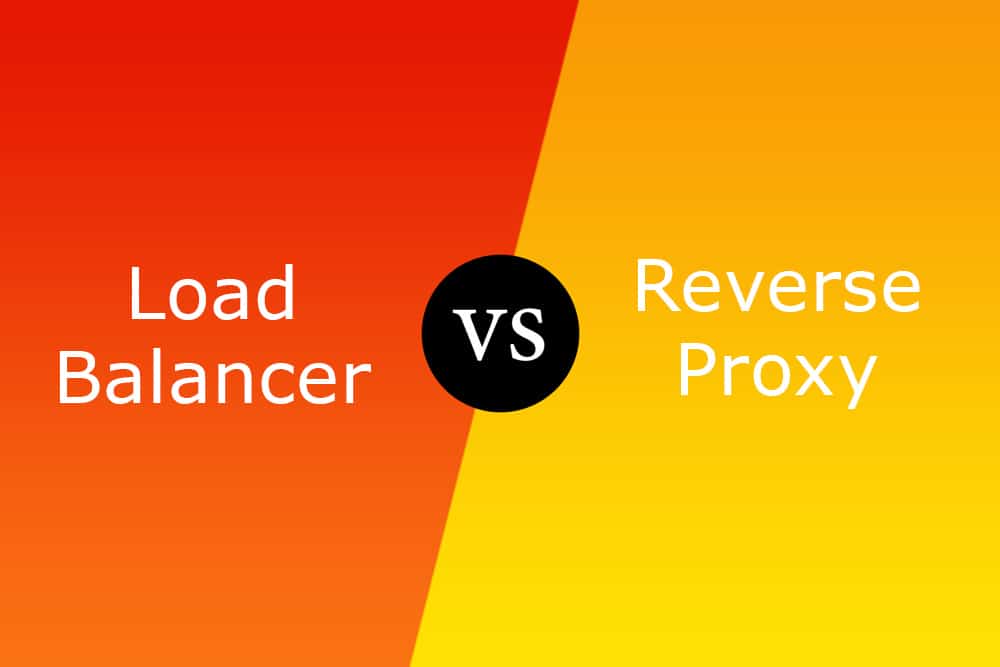
DISCLOSURE: This post may contain affiliate links, meaning when you click the links and make a purchase, we receive a commission.
Pondering over ways to improve your client-server architecture? You might have come across two popular terms, load balancer and reverse proxy.
With both fulfilling the intermediary role by increasing your server(s) efficiency and load time, it can be confusing as to why they are two different things when they fulfill the same role.
With both as the top solutions when you consider adding a proxy between your clients and server, knowing about what sets them apart becomes evermore important.
Well, if this is something that intrigues you, keep on reading as we explore the intricate differences between the two technologies and what are the implicit workings under the hood.
What Is Load Balancer And Reverse Proxy
Load balancer and reverse proxy are add-ons to a traditional client-server network architecture. They are both intermediary parts in the client-server architecture as in they introduce an additional node that requests have to route through to reach the server.
A reverse proxy intercepts incoming requests from clients and forwards them to the server after processing or performing pre-determined tasks on the request. A load balancer distributes incoming network traffic amongst a number of servers so that they are all equally utilized and any particular one doesn’t get bogged down.
They can be dedicated servers performing these duties but increasingly in modern setups, they are software solutions integrated within the pre-existing servers themselves. You don’t even have to worry about implementation, as most cloud service providers have these implementations in place.
Load Balancer vs Reverse Proxy
Differences Between Load Balancer And Reverse Proxy
Whilst offering services and quality-of-life improvements that often overlap, these two components have much more differences in terms of their workings and use cases. The only common attribute amongst them is they are utilized as an intermediary component in a client-server architecture.
Technically they are very different. Follow along as we detail these differences, so you can make a more informed decision when you finally decide to take your client-server architecture to another level.
A load balancer, as the name suggests, balances the ‘load’ amongst a bunch of servers. In this case, the load is the network traffic that comes through. As such, it only makes sense to deploy a load balancer when you have multiple servers in place to link them all up with a load balancer.
On the other hand, reverse proxy interfaces with a server to handle its requests and responses to add additional security or features. It can be implemented and taken advantage of even when you have a single solitary server. Although this is not a limitation, you can still use a reverse proxy with more than one server.
This is where reverse proxy one-ups the load balancer, as it can include a load balancer of its own or interface with one when you use it with multiple servers. Thus for cases where it justifies the use of both a load balancer and a reverse proxy, you can simply add a reverse proxy and call it a day.
Features
Load balancer follows the age-old marketing motto, “keep it simple, stupid”. It only does what its name suggests and no more, which is distributing client requests between servers so that one particular server does not get jotted down. However, some software-based features add a bit of extra functionality.
While distributing the load amongst the servers, a load balancer also handles errors that might arise in a server. It redirects it away from the client to be handled by a different server. Additionally, it also provides session persistence, where a client is handled by the same server throughout.
Doing so is critical for e-commerce applications as the user’s properties, such as wishlist or shopping cart, have to be persisted/stored in the server. So if the same server handles one user then only that has to maintain the user instance. This saves on storage and speeds up the site’s responsiveness.
Meanwhile, the sole purpose of a reverse proxy is to add more ‘power’ to your servers through additional features. At its core, a reverse proxy acts as the ‘face’ of a server(s). As far as the client is concerned, the reverse proxy is the server. Doing so adds an additional layer of security by virtue of service abstraction.
Response Speedup
Load balancers, by nature of their working, improve response times for clients by redirecting their requests to an available server rather than waiting on a busy one. However, this is as far as their control flow goes, as no additional measures attempt to speed up the client-server request/response cycles.
Reverse Proxy, on the other hand, has more measures up its sleeve. As it acts as a proxy between the client and server, it can improve or add to the process. The most common way this is done is by compressing the responses from the server, thus decreasing the network bandwidth that the server takes up.
This speeds up a complex server system considerably. Additionally, it also uses a plethora of other measures to speed up response times which are termed web acceleration. It includes features like SSL encryption, caching, and Compression (of requests and responses) to reduce the time to provide responses to clients.
Verdict
If you are operating on a small scale with only one or two servers, then you shouldn’t even consider a load balancer, as it will make no difference to your response times. This is an intermediary service suited for larger organizations with multiple servers and high server loads.
On the other hand, in your small tech setup, a reverse proxy will be more practical and will have more benefits apart from response time speedups. Larger organizations can use a combination of both to get the best of both worlds. Here is a table summarizing all we have discussed in this article:
| Features | Load Balancer | Reverse Proxy |
|---|---|---|
| Server Size | Used when there is more than one server | Can be used for both single or multiple servers |
| Features | Basic features other than ‘load balancing’ | Host of features including security and web acceleration and load balancing as well |
| Response Speedup | Achieved as a result of distributing request amongst servers | Host of measures focused on speedup. Response compression and web acceleration |
Conclusion
To conclude, as we have discussed in detail, while conceptually they might seem similar, their working is very different. If all you require is a more efficient use of your servers, then a simple load balancer should do. However, for even speedier speed up and security features, a reverse proxy is more suitable.


